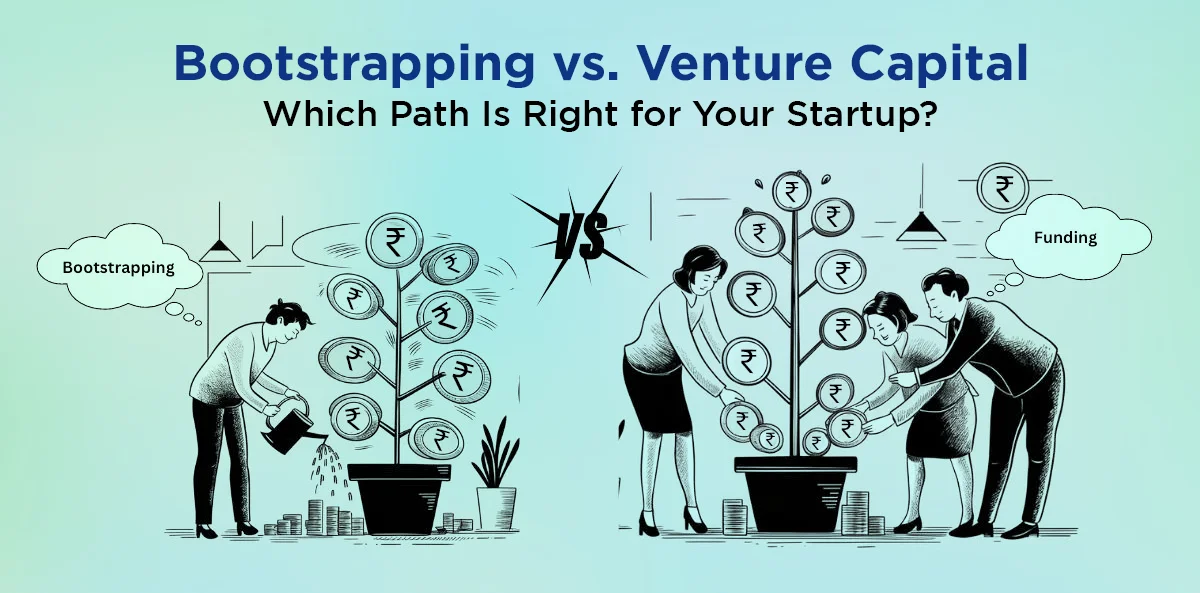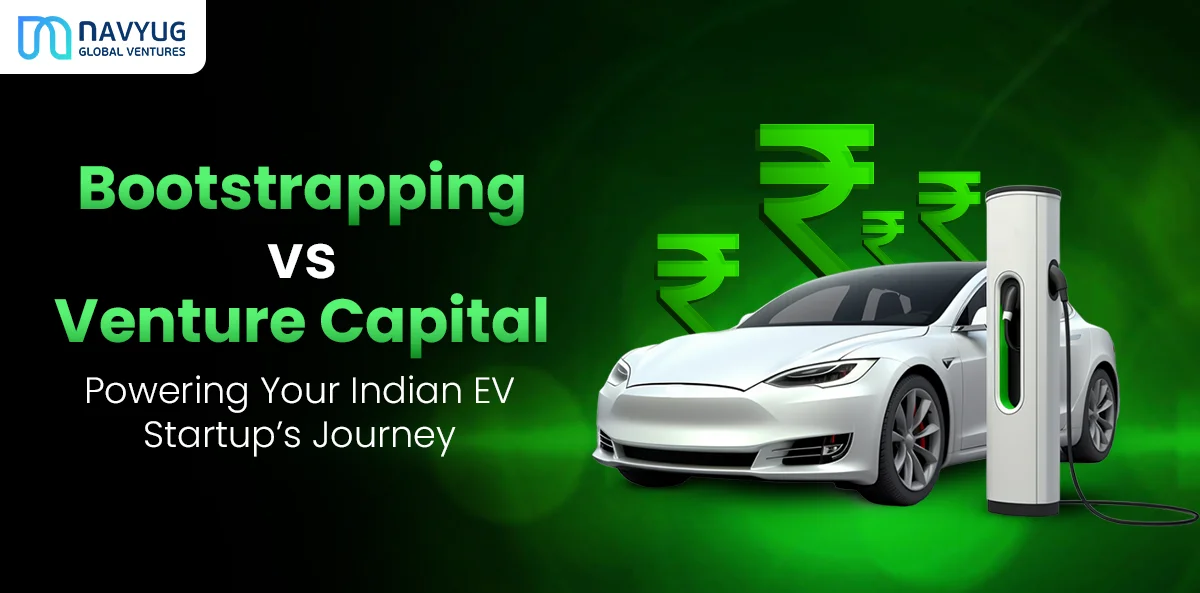What Is Bootstrapping? The Art of Building with Your Own Resources
Definition and Core Concept: Fueling Growth from Within
Bootstrapping, in its essence, is the practice of starting and growing a business using only personal finances or the revenue generated by the business itself, without seeking external equity investment. Think of it as pulling yourself up by your own bootstraps – hence the name. This means relying on:
- Personal Savings: Investing your own hard-earned money.
- Credit Cards: Using personal or business credit for short-term funding (use with caution!).
- Loans: Potentially taking personal loans or small business loans (which require repayment but don’t dilute equity).
- Early Customer Revenue: Funding operations and growth directly from sales.
- Customer Prepayments/Advance Payments: Asking customers to pay upfront for services or products not yet delivered.
- Sweat Equity: Investing time and effort instead of capital.
The core philosophy of bootstrapping revolves around resourcefulness, lean operations, financial discipline, and achieving profitability as quickly as possible. Self-funded startups operating under this model prioritize sustainable growth fueled by actual customer value, rather than relying on large external cash infusions.
Pros of Bootstrapping: The Rewards of Self-Reliance
Choosing the bootstrapping path offers several compelling advantages:
- Full Ownership and Unfettered Control: This is often the most significant draw. Without external investors demanding board seats or holding significant voting rights, founders retain complete control over their company’s strategic direction, product roadmap, hiring decisions, company culture, and exit strategy. You answer only to yourselves and your customers.
- No Equity Dilution: Every percentage point of equity you give away early on can represent millions (or more) in a successful exit. Bootstrapping means you keep 100% (or close to it, barring co-founders) of your company. This maximizes your personal financial return if the company becomes valuable.
- Agile and Swift Decision-Making: Bootstrapped companies can often pivot or adapt more quickly. Decisions don’t require lengthy board approvals or consensus-building among diverse investor groups. You can react rapidly to market feedback or competitive pressures.
- Intense Focus on Real Revenue and Profitability: Necessity is the mother of invention – and profitability. Bootstrapped startups must generate revenue and manage costs effectively from day one to survive. This instills financial discipline and ensures the business model is inherently viable and customer-centric, rather than focused solely on growth metrics that might not translate to long-term sustainability.
- Stronger Company Culture (Potentially): Building something from the ground up with limited resources can foster a unique sense of camaraderie, resourcefulness, and shared purpose among the early team.
Cons of Bootstrapping: The Challenges of Limited Resources
Despite its appeal, bootstrapping comes with significant drawbacks:
- Slower Growth Trajectory: Without large capital injections, growth is inherently limited by the cash generated from operations. Scaling marketing efforts, hiring large teams, investing heavily in R&D, or expanding geographically can be significantly slower compared to VC-backed competitors. In fast-moving markets, this can mean losing out on market share.
- Severely Limited Resources: Beyond just cash, bootstrapping often means constraints on acquiring top-tier talent (who may seek higher salaries or the prestige of VC-backed firms), investing in cutting-edge technology or equipment, and affording large-scale marketing campaigns. Founders often wear multiple hats, stretching themselves thin.
- Difficulty Scaling Rapidly: Hitting an inflection point where rapid scaling is necessary to capture a market opportunity can be extremely challenging without external capital. Building the required infrastructure, operational capacity, and sales teams organically takes time that you might not have.
- Significant Personal Financial Risk: Founders often pour their life savings into the business, take on personal debt, and forgo salaries for extended periods. If the startup fails, the personal financial consequences can be devastating. The stress associated with this constant financial pressure can also take a toll.
- Missed Opportunities: Sometimes, a market window is brief. Bootstrapping might prevent you from seizing large opportunities that require significant upfront investment.
Understanding these pros and cons of bootstrapping is crucial before committing to this demanding, yet potentially rewarding, path.
What Is Venture Capital? Partnering for Accelerated Growth
Definition and How It Works: Exchanging Equity for Fuel
Venture Capital (VC) is a form of private equity financing provided by venture capital firms or funds to startups and small businesses exhibiting high growth potential. In essence, venture capital for startups involves selling a portion of your company’s ownership (equity) to investors in exchange for capital. This process typically unfolds in stages or “rounds” (e.g., Seed, Series A, Series B, C+) as the company grows and meets milestones.
How it works:
- Pitching: Founders present their business plan, team, traction, and market opportunity to potential VCs.
- Due Diligence: Interested VCs conduct thorough research into the startup’s financials, market, technology, team, and legal standing.
- Term Sheet: If diligence is positive, the VC offers a term sheet outlining the investment amount, valuation, equity stake, control terms (like board seats), and other conditions.
- Funding: Once terms are agreed upon and legal documents are finalized, the capital is transferred to the startup.
Crucially, VCs bring more than just money. Reputable firms offer strategic guidance, industry expertise, valuable network connections (to potential customers, partners, future investors, and talent), and operational support to help their portfolio companies succeed. They become partners, albeit partners with specific expectations.
Pros of Venture Capital: The Power of External Fuel
Seeking VC funding offers significant advantages, particularly for ambitious startups:
- Massively Accelerated Growth: Access to substantial capital allows VC-backed startups to scale operations rapidly. This means hiring top talent, launching aggressive marketing campaigns, investing heavily in research and development, expanding into new markets, and potentially acquiring smaller competitors – often much faster than bootstrapped counterparts.
- Access to Invaluable Expertise and Mentorship: Experienced VCs and their networks provide strategic guidance honed from seeing hundreds of startups succeed and fail. They can offer advice on business strategy, scaling operations, navigating market challenges, financial planning, and preparing for future funding rounds or an exit. Board members appointed by VCs can bring critical industry experience.
- Larger Budgets for Key Initiatives: VC funding enables significant investment in areas crucial for capturing market leadership: cutting-edge R&D, building robust sales and marketing engines, and attracting highly skilled (and often expensive) engineers, marketers, and executives.
- Enhanced Credibility and Validation: Securing funding from well-regarded VCs acts as a strong signal to the market. It can significantly enhance a startup’s credibility, making it easier to attract top talent, sign up major customers, form strategic partnerships, and secure future funding rounds.
- Network Effects: VCs can open doors through their extensive networks, facilitating crucial introductions that might otherwise take years to cultivate.
Cons of Venture Capital: The Price of Fast Growth
The benefits of VC funding come with significant trade-offs:
- Equity Dilution and Loss of Ownership: This is the most direct cost. With each funding round, founders give up a larger percentage of their company. Over time, founders can end up owning a minority stake, although potentially a minority stake in a much larger, more valuable company.
- Reduced Control and Autonomy: VCs typically require board seats and certain control provisions (veto rights over major decisions like acquisitions, large expenditures, or changes in leadership). Founders must report to their board, justify decisions, and operate with less autonomy than their bootstrapped peers.
- Intense Pressure for Rapid Growth and ROI: VCs operate on specific fund cycles (often 7-10 years) and need to deliver substantial returns to their own investors (Limited Partners). This translates into immense pressure on portfolio companies to achieve hyper-growth and aim for a significant exit (IPO or large acquisition) within that timeframe, which may not always align with the founder’s original vision or the best long-term interests of the company.
- Potential Misalignment with Investor Goals: While ideally partners, founders and VCs can sometimes have differing priorities regarding strategy, spending, hiring, product direction, or the timing and nature of an exit. Resolving these conflicts can be challenging.
- Time-Consuming Fundraising Process: Raising venture capital is a demanding process that can distract founders from running their business for months.
When to Choose Bootstrapping Over VC (and Vice Versa): Aligning Strategy with Reality
Bootstrapping is Often Ideal When:
- Startup Costs are Low: Businesses that don’t require significant upfront investment in R&D, inventory, or equipment (e.g., many service businesses, niche software tools, content platforms) are often well-suited for bootstrapping.
- Your Product/Service Can Generate Revenue Early: If you can quickly find paying customers and generate positive cash flow, you can fund growth organically. This validates your business model early and reduces reliance on external capital.
- Maintaining Control and Independence is Paramount: If your primary goal is to build a sustainable business you fully control, potentially running it for the long term without the pressure of an imminent exit, bootstrapping aligns better with this vision.
- The Market Allows for Slower, Steady Growth: In niche markets or industries without intense time pressure or dominant incumbents requiring rapid scale to compete, a bootstrapped approach can be perfectly viable.
Venture Capital is Often the Better Choice When:
- You Operate in a High-Growth, Capital-Intensive Market: Industries like deep tech AI, biotechnology, enterprise SaaS, semiconductor manufacturing, or consumer hardware often require massive upfront R&D, infrastructure, and market development investments that are impractical to bootstrap.
- Speed-to-Market is a Critical Competitive Advantage: In “winner-take-all” or “winner-take-most” markets, being the first or fastest scaler is crucial. VC funding provides the necessary fuel to capture market share quickly before competitors emerge or consolidate. This is particularly relevant for many tech funding for startups in India, where competition in sectors like Fintech and E-commerce is fierce.
- Network Effects are Strong: For businesses where the value increases significantly with the number of users (e.g., social networks, marketplaces), rapid user acquisition funded by VC can create a defensible moat.
- You Need External Expertise and Network Access: If navigating complex regulatory environments, building sophisticated technology, or accessing high-level industry partnerships is crucial, the strategic support and connections provided by VCs can be invaluable.
- A Large Exit (IPO or Acquisition) is the Explicit Goal: If the founders’ ambition from the outset is to build a large-scale company and achieve a significant liquidity event within a 5-10 year horizon, the VC path is typically necessary to achieve the required scale and valuation.
Success Stories – Illustrating Both Paths to Triumph:
Iconic Bootstrapped Successes:
- Zoho: A global SaaS powerhouse founded in Chennai, Zoho has famously eschewed VC funding, maintaining private ownership and focusing on long-term, profitable growth across a wide suite of business applications. Their journey highlights a commitment to product, customer value, and independence.
- Basecamp (formerly 37signals): A pioneer in project management software and remote work, Basecamp has long championed bootstrapping, profitability, and sustainable growth over hyper-scale, even returning VC investment early in their history.
- Zerodha: India’s largest stockbroker, Zerodha disrupted the financial services industry through technology and a lean operational model. It achieved massive scale and profitability entirely through bootstrapping, proving that even in competitive sectors like fintech, self-funding can lead to market domination. This is a powerful example for those seeking funding for startups in India outside the VC route.
Trailblazing VC-Backed Giants:
- Flipkart: Starting as an online bookstore, Flipkart leveraged significant venture capital for startups across multiple rounds to rapidly scale, diversify into numerous categories, build a massive logistics network, and ultimately become India’s e-commerce leader, culminating in a landmark acquisition by Walmart. Their story exemplifies hyper-growth fueled by VC.
- Razorpay: A leading Indian fintech company providing payment gateway solutions, Razorpay utilized substantial VC funding to build robust infrastructure, expand its product suite, acquire talent, and achieve significant market share in the highly competitive digital payments space.
- CRED: Focused on premium credit card users, CRED raised substantial VC rounds to fuel aggressive user acquisition, build a strong brand, and create an ecosystem of rewards and financial services. Their high-burn, high-growth model is characteristic of many ambitious VC-backed startups.
These examples illustrate that both bootstrapping and venture capital are valid startup funding options that can lead to immense success. The key is understanding which model best suits your specific circumstances, market, and ambitions.
Final Thoughts – Which Funding Path is Truly Right for
Ultimately, the bootstrapping vs venture capital decision boils down to a fundamental alignment between your funding strategy and your core vision for the company. There is no universally “better” option.
- Are you building a lifestyle business or a legacy company you want to control indefinitely, focusing on profitability and sustainable growth? Bootstrapping might be your path.
- Are you aiming to disrupt a massive market, achieve rapid scale, capture significant market share quickly, and potentially pursue a large exit? Venture capital is likely necessary.
Consider your personal risk appetite, the capital intensity of your business, the competitive landscape, your long-term goals, and the kind of company culture you want to build. Critically evaluate the pros and cons of bootstrapping against the benefits and drawbacks of venture capital for startups. Your startup funding strategies should be a conscious choice that empowers your vision, not one dictated by trends or external pressure.
Need Funding Guidance on Your Startup Journey? Let’s Talk
Navigating the complex world of startup funding options, especially in the vibrant ecosystem of funding for startups in India, can be daunting. Choosing between bootstrapping and seeking investment requires careful consideration and strategic insight.
At Navyug Global, we partner with ambitious founders building the future. We provide more than just capital; we offer strategic guidance, industry connections, and dedicated support tailored to the unique needs of early-stage companies. We specialize in providing smart, growth-focused venture capital for startups poised for significant impact.
Whether you’re considering your first external funding round, looking to scale your VC-backed startup, or simply need expert advice on structuring your growth, we can help shape your funding journey.




